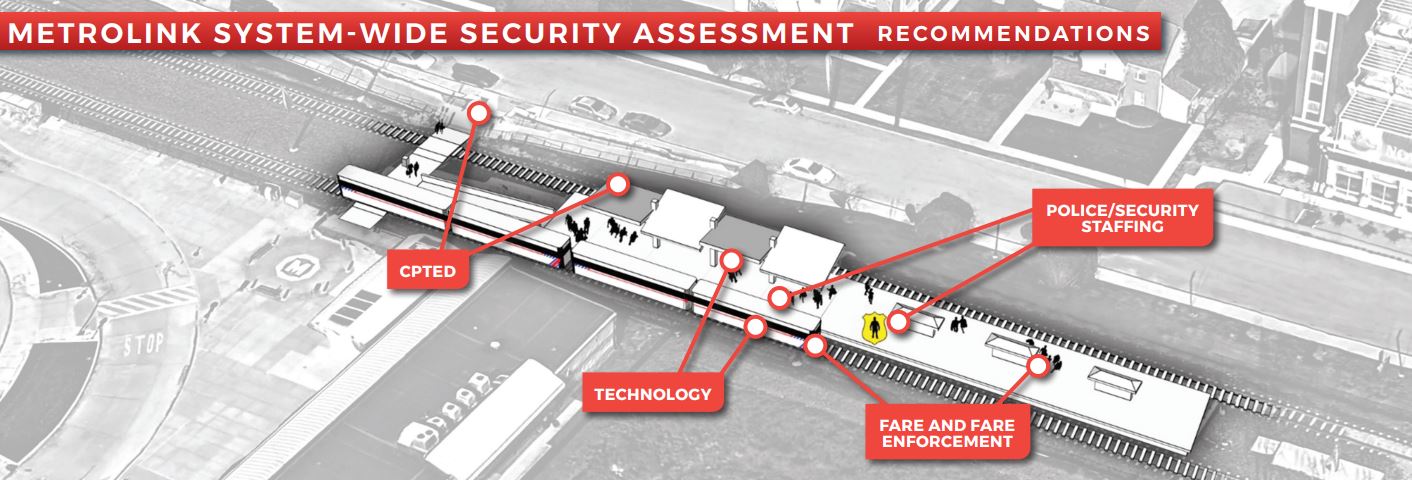 Missourians rely on public transit for 62 million rides a year. For many, transit access is the only means by which they can get to work and doctor appointments. But the impact extends beyond providing critical access. A safe, reliable public transit system plays a key role in stimulating economic development, attracting and retaining business, establishing healthier, sustainable communities, connecting individuals to job opportunities and furthering equality. However, ridership on the St. Louis system has declined more than 22 percent over the past several years. According to the recently released MetroLink System-wide Security Assessment initiated by East-West Gateway Council of Governments, there is an opportunity with a strategic security plan to get St. Louis back on board transit.
Missourians rely on public transit for 62 million rides a year. For many, transit access is the only means by which they can get to work and doctor appointments. But the impact extends beyond providing critical access. A safe, reliable public transit system plays a key role in stimulating economic development, attracting and retaining business, establishing healthier, sustainable communities, connecting individuals to job opportunities and furthering equality. However, ridership on the St. Louis system has declined more than 22 percent over the past several years. According to the recently released MetroLink System-wide Security Assessment initiated by East-West Gateway Council of Governments, there is an opportunity with a strategic security plan to get St. Louis back on board transit.
The East‐West Gateway Council of Governments began the first phase of the MetroLink Security Assessment project in May 2018 led by WSP USA. This assessment was undertaken at the request of regional leaders following the Memorandum of Understanding between the three jurisdictions where MetroLink operates (St. Clair County, St. Louis City, and St. Louis County) and Metro Transit in May 2017. Initially the study was envisioned to determine whether barriers or other infrastructure treatments would be more effective in deterring incidents on the MetroLink system. After much discussion, research, and deliberation, the assessment transformed into a third‐party evaluation of Metro Transit’s current security practices including its partnerships with law enforcement and contracted security.
“The recommendations coming out of this study provide the blue print for Metro and their law enforcement partners to build a comprehensive security strategy that is coordinated across county and state lines and has transit riders at its focus,” said, Jim Wild, Executive Director of East-West Gateway Council of Governments. “We will continue to support these efforts and work with Metro as they redesign their security approach.”
The assessment and recommendations released on Feb. 22 fall under 6 categories – Strategic Security Plan, Police/Security Staffing, Procedures and Training, Fare and Fare Enforcement, Crime Prevention through Environmental Design (CPTED), and Technology. Under these categories, there are 99 recommendations prioritized by level of urgency.
According to WSP, key urgent priorities include:
- Development of a strategic security plan.
- Better defined roles and responsibilities for each security provider/policing agency
- Better data collection to inform staffing and deployment
- Training focused on transit security
- Clearly posted and enforced code of conduct for riders
- Fare enforcement policies and procedures
- De‐politicization of the security issue, deal with disagreements out of the view of the public, and work together toward the common goal of having a safe and secure system.
- Presentation of a united front and working together towards this common goal are crucial to the program’s successful implementation.
Some specific recommendations under each category include: elimination of four canine units at Metro, emphasize community policing, security cameras at stations need to be updated, emphasize customer service, and security and police should be more visible with updated uniforms.
“Kudos to East-West Gateway for their leadership on this study, and these recommendations which are an important next step. There is no single answer to the safety and security issues impacting the St. Louis transit system. Agreement by the City, County, St. Clair County and Bi-State in May 2017 to tackle those issues jointly was an unprecedented show of regional collaboration. Now the region has an opportunity to take that one step further with the 99 recommendations within the MetroLink Security Assessment report,” said Kimberly Cella, CMT Executive Director
Metro has already started implementing some of the recommendations from the report including a change in Metro Public Safety leadership, shared radio use, policies and procedures for CCTV and data sharing, and contracts with law enforcement partners are being developed. In addition, through the work of many local stakeholders there have been improvements including, but not limited to:
- Increased enforcement and increased police officer presence.
- Expansion of patrols by St. Louis County Police to increase coverage of St. Louis City Stations. In addition, St. Clair County Sheriff’s Dept. will be patrolling stations in the City of St. Louis by this summer. SLMPD shifted patrols to increase presence in afternoons and during rush hours.
- The Completion of a MetroLink Access Pilot at three highly utilized stations and now expansion of that concept to five stations with more permanent control measures.
- Initiation of Community Engagement Programming along with the alignment with events like Toasty on Transit and Wake Up to Sweeter Commute.
